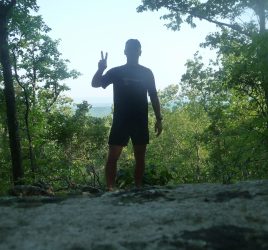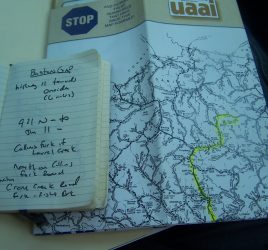(Unverified) Fun Facts about Colonial Pennsylvania
The most common question I ask myself while researching: Why?
This seems like an easy question, but it’s precisely the easiness of it that causes you to continually return to it. If you can answer a series of repeated whys (along with a few whens) you can construct a meaningful timeline of not just what happened but also the cultural incidents surrounding the happening. Without the why, there is no there there in your story.
The questions I kept asking myself was why did the Bakers end up in Pennsylvania, and why did they go to Lancaster, and why did they make guns. Here is what I learned from Jim Lewars at the Landis Valley Museum:
Why Was Pennsylvania So Important
When William Penn purchased the land in 1681, he made a decision that he would oversee the settlement of Pennsylvania. As such, the state slowly expanded west and there were limitations on what settlers could do. For instance: you couldn’t expand your settlement into the unsettled territories without Penn’s permission so there was a great migration of tradesmen into the southern colonies.
This controlled settlement meant that Philadelphia was one of the densest cities in the English empire. (I was told its 25,000 people made it the second largest city in the empire behind London.)
This controlled growth along with its dense population brought together a vast, multi-cultural group of people, which included the English, the Scots-Irish, and the Rhine Valley Germans.
Penn specifically declared his state would have no official religion, which made it attractive to people from across the world.
Pennsylvania became known, and attractive, worldwide because all of these influences meant anyone with trade skills or farming skills could reasonably expect to find work when they arrived, and Penn’s systematic selling of land meant that you could even purchase land before you arrived.
Why Did Gunsmiths Come to Pennsylvania
Three elements made Lancaster in particular a good gun-making center:
- rich farmland meant people could live comfortably;
- the hardwood forest provided the materials needed for guns; and
- the iron bearing ridges and river provided the necessary manufactured materials for guns.
The international port of Philadelphia meant that farmers (and gunsmiths) had access to selling wares across the globe, which means the overall population was what we might call middle class today. This wash of trade and immigrants meant that tradesmen could find work easily.
Why Do We Care about the Kentucky Rifle
The gun itself is a distinctly American object in that it only exists here, but it’s a bastardization of a multitude of cultures and tradesmen coming together. The Kentucky Long Rifle is an amalgamation of: The German Jaeger, with its short barrel and large caliber, and the English Fowler, with its longer barrel and smaller caliber.
This gun was forged in Lancaster, but its traceable as an object across the globe because of the location of its creation.
It’s impossible to trace the evolution of the gun because there was so much activity happening, and it’s impossible to know what the relationship between the gunsmith and the customer was. Nobody really understands how ordinary people came in and purchased guns. For instance:
- Did they mix and match pieces they saw?
- Did they order finished pieces?
- Did they custom purchase?
- Did they do all of these?
Since nobody can lay claim to its invention, everyone is part of the invention process. That fact, along with its pronounced use throughout the colonies, turned the gun into the American Gun.
So Why Don’t the Bakers Appear in any History Books
(Editor’s Note: This I learned from the Lancaster Historical Society.)
Samuel and Robert Baker arrived in 1717, 33 years before the Lancaster gunsmiths would become well known. In fact, Caleb Baker — Robert’s Son — sold the last of the Baker land in 1741.
While Robert Baker had the first gunsmith shop in what would become Lancaster County (it wasn’t a county for another 12 years), the Bakers were involved in trading and trapping, which meant that much of his business was done with American Indians. For all the multicultural mash-up happening in Philadelphia, the country still wasn’t down with the whole American Indiana thing.
There are no Baker rifles in existence although there were rifles found in Indian settlements and grave sites that were likely made by the family. (And by likely, the historians mean: “We have no idea.”)



